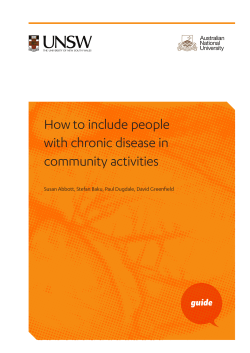
The Prevention and Public Health Fund: A Priority for Cancer Health
The Prevention and Public Health Fund: Reducing the Risk of Cancer for All Americans September 2013 The Prevention and Public Health Fund: A Priority for Cancer Health Every American deserves to live a long, healthy life. But we’re falling short of that goal. Reducing the risk of disease is the most effective, common sense way to improve health and reduce healthcare costs. In fact, it is within our power to reduce the risk of cancer by about 50% through changes in tobacco use, diet, and exercise. i C-Change is applying a unique three-sector collaborative approach to promote a national prioritization of cancer risk reduction. As one of the three main sectors that can contribute to the elimination of cancer, we believe the federal government must make substantial annual investments in cancer risk reduction efforts, and in particular through the protection and promotion of the Prevention and Public Health Fund. “ Investing in Cancer Risk Reduction Is Essential ‣ Economic Costs are High: U.S. Health expenditures are about 18% of GDP ii, and growing. Our medical system does not have the capacity to adequately treat our growing population. ‣ Chronic Disease Drives Healthcare Spending: Preventable, non-communicable chronic conditions including cancer consume 75% of the total U.S. spending on medical care. iii ‣ Disease Risk Reduction Works: Even small, strategic investments in community level prevention have been shown to significantly reduce health care costs, which are the number one concern of small business owners, according to the National Federation of Independent Business. iv Investing in Cancer Risk Reduction Works ‣ Risk Reduction Pays Off: A recent Health Affairs article reports that Cancer deaths fell by 1.1% for each 10% increase in local public health spending between 1993 and 2005. Infant mortality and deaths from cardiovascular disease and diabetes also declined. v ‣ Risk Reduction Saves Lives: Other research demonstrates prevention through better behavioral and economic conditions will save 4.5 million lives and save almost $600 billion over the next 25 years. vi ‣ But We Spend to Fix, not to Prevent: Only 0.12% of the total 2013 HHS President’s budget request ($941 billion) is for CDC’s Chronic Disease Program ($1.1 billion), vii the leading U.S. government program to prevent chronic diseases; only 3.1% of the 2.5 trillion health expenditures by government are for public health agencies, a primary function of which is disease prevention. ii , viii The Prevention and Public Health Fund Needs Your Support The Prevention and Public Health Fund (PPHF) the first mandatory funding stream dedicated to disease prevention and early detection. Funding for prevention had bipartisan support during the Patient Protection and Affordable Care Act (ACA) discussions. ‣ By law the PPHF is required to “provide for expanded and sustained national investment in prevention and public health programs to improve health and help restrain the rate of growth in private and public health care costs.” ‣ In 2011, almost 20% of the $750 million PPHF allotted went to Community Transformation Grants, for “promoting healthy lifestyles, especially among population groups experiencing the greatest burden of chronic disease.” ‣ In 2013 the PPHF is expected to support hundreds of thousands of breast and cervical cancer screenings.v ‣ The Middle Class Tax Relief and Job Creation Act of 2012 (HR 3630), signed into law (February 2012), reduced the Prevention and Public Health Fund by $6.25 billion over 10 years to temporarily extend unemployment benefits and avert a planned Medicare payment cut to physicians through December, 31 2012. Several other threats to the Fund were introduced over the last year. Risk Reduction Is the Best Care, the Best Buy and the Best Policy – So Take Action: As the Congress considers the PPHF this year, we ask that you help to reduce your constituents’ risk of cancer by working to ensure the Prevention and Public Health Fund is fully funded as intended when first included in the Affordable Care Act. i American Cancer Society. Cancer Facts &Figures 2012. Atlanta: American Cancer Society; 2012. Martin, A.B. et al. January 2012. Growth in US health spending remained slow in 2010; Health share of gross domestic product was unchanged from 2009. Health Affairs 31(1): 208-219. iii Center for Disease Control and Prevention. Rising Health Care Costs are Unsustainable. Accessed from: http://www.cdc.gov/workplacehealthpromotion/businesscase/reasons/rising.html on June 21, 2012. iv Trust for America’s Health. Investing in Prevention Benefits Business and the Economy. Accessed from: http://healthyamericans.org/health-issues/wpcontent/uploads/2012/03/Business-and-Economy-Fund-2-pager-03-06-20122.pdf on November 8, 2012. v Glen P. Mays and Sharla A. Smith. Evidence Links Increases in Public Health Spending to Declines in Preventable Deaths. Health Affairs 30, no8 (2011). vi Bobby Milstein, Jack Homer, Peter Briss, Deron Burton and Terry Pechacek. Why Behavioral and Environmental Conditions are Needed to Improve Health at Lower Costs. Health Affairs, 30, no5, (2011): 823-832. vii Department of Health and Human Services. Fiscal Year 2013 Budget in Brief: Strengthening Health and Opportunity for all Americans. Accessed from: http://www.hhs.gov/budget/budget-brief-fy2013.pdf on June 21, 2012. viii Trust for America’s Health. CDC Chronic Disease Funding Chart. Accessed at http://healthyamericans.org/health-issues/wp-content/uploads/2013/07/Prevention-Fund-Overii Time.pdf on September 19, 2013
© Copyright 2025





















